Regev Cohen
Latent Beam Diffusion Models for Decoding Image Sequences
Mar 26, 2025Abstract:While diffusion models excel at generating high-quality images from text prompts, they struggle with visual consistency in image sequences. Existing methods generate each image independently, leading to disjointed narratives - a challenge further exacerbated in non-linear storytelling, where scenes must connect beyond adjacent frames. We introduce a novel beam search strategy for latent space exploration, enabling conditional generation of full image sequences with beam search decoding. Unlike prior approaches that use fixed latent priors, our method dynamically searches for an optimal sequence of latent representations, ensuring coherent visual transitions. To address beam search's quadratic complexity, we integrate a cross-attention mechanism that efficiently scores search paths and enables pruning, prioritizing alignment with both textual prompts and visual context. Human evaluations confirm that our approach outperforms baseline methods, producing full sequences with superior coherence, visual continuity, and textual alignment. By bridging advances in search optimization and latent space refinement, this work sets a new standard for structured image sequence generation.
Streamlining Conformal Information Retrieval via Score Refinement
Oct 03, 2024

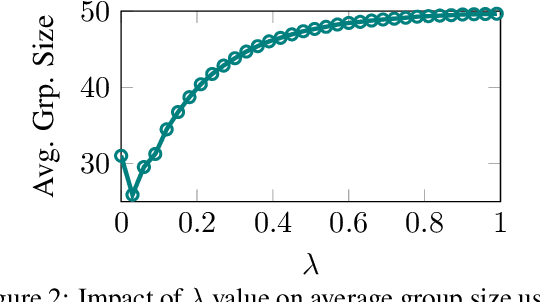
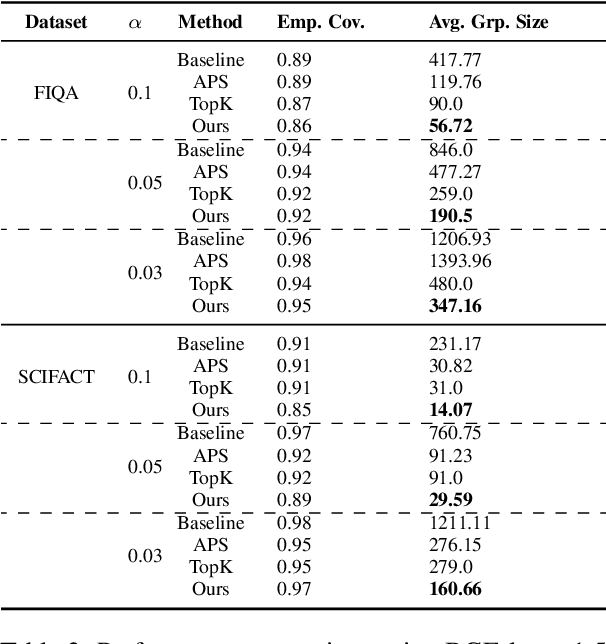
Abstract:Information retrieval (IR) methods, like retrieval augmented generation, are fundamental to modern applications but often lack statistical guarantees. Conformal prediction addresses this by retrieving sets guaranteed to include relevant information, yet existing approaches produce large-sized sets, incurring high computational costs and slow response times. In this work, we introduce a score refinement method that applies a simple monotone transformation to retrieval scores, leading to significantly smaller conformal sets while maintaining their statistical guarantees. Experiments on various BEIR benchmarks validate the effectiveness of our approach in producing compact sets containing relevant information.
Anchored Diffusion for Video Face Reenactment
Jul 21, 2024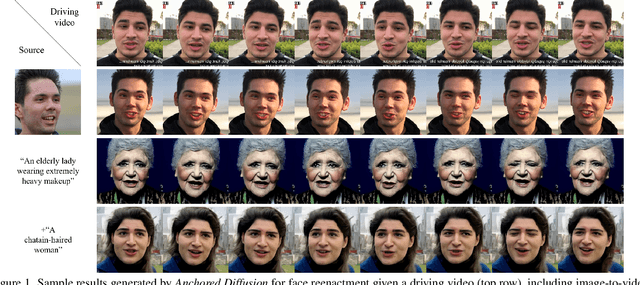



Abstract:Video generation has drawn significant interest recently, pushing the development of large-scale models capable of producing realistic videos with coherent motion. Due to memory constraints, these models typically generate short video segments that are then combined into long videos. The merging process poses a significant challenge, as it requires ensuring smooth transitions and overall consistency. In this paper, we introduce Anchored Diffusion, a novel method for synthesizing relatively long and seamless videos. We extend Diffusion Transformers (DiTs) to incorporate temporal information, creating our sequence-DiT (sDiT) model for generating short video segments. Unlike previous works, we train our model on video sequences with random non-uniform temporal spacing and incorporate temporal information via external guidance, increasing flexibility and allowing it to capture both short and long-term relationships. Furthermore, during inference, we leverage the transformer architecture to modify the diffusion process, generating a batch of non-uniform sequences anchored to a common frame, ensuring consistency regardless of temporal distance. To demonstrate our method, we focus on face reenactment, the task of creating a video from a source image that replicates the facial expressions and movements from a driving video. Through comprehensive experiments, we show our approach outperforms current techniques in producing longer consistent high-quality videos while offering editing capabilities.
Looks Too Good To Be True: An Information-Theoretic Analysis of Hallucinations in Generative Restoration Models
May 26, 2024



Abstract:The pursuit of high perceptual quality in image restoration has driven the development of revolutionary generative models, capable of producing results often visually indistinguishable from real data. However, as their perceptual quality continues to improve, these models also exhibit a growing tendency to generate hallucinations - realistic-looking details that do not exist in the ground truth images. The presence of hallucinations introduces uncertainty regarding the reliability of the models' predictions, raising major concerns about their practical application. In this paper, we employ information-theory tools to investigate this phenomenon, revealing a fundamental tradeoff between uncertainty and perception. We rigorously analyze the relationship between these two factors, proving that the global minimal uncertainty in generative models grows in tandem with perception. In particular, we define the inherent uncertainty of the restoration problem and show that attaining perfect perceptual quality entails at least twice this uncertainty. Additionally, we establish a relation between mean squared-error distortion, uncertainty and perception, through which we prove the aforementioned uncertainly-perception tradeoff induces the well-known perception-distortion tradeoff. This work uncovers fundamental limitations of generative models in achieving both high perceptual quality and reliable predictions for image restoration. We demonstrate our theoretical findings through an analysis of single image super-resolution algorithms. Our work aims to raise awareness among practitioners about this inherent tradeoff, empowering them to make informed decisions and potentially prioritize safety over perceptual performance.
Uncertainty-Aware PPG-2-ECG for Enhanced Cardiovascular Diagnosis using Diffusion Models
May 19, 2024Abstract:Analyzing the cardiovascular system condition via Electrocardiography (ECG) is a common and highly effective approach, and it has been practiced and perfected over many decades. ECG sensing is non-invasive and relatively easy to acquire, and yet it is still cumbersome for holter monitoring tests that may span over hours and even days. A possible alternative in this context is Photoplethysmography (PPG): An optically-based signal that measures blood volume fluctuations, as typically sensed by conventional ``wearable devices''. While PPG presents clear advantages in acquisition, convenience, and cost-effectiveness, ECG provides more comprehensive information, allowing for a more precise detection of heart conditions. This implies that a conversion from PPG to ECG, as recently discussed in the literature, inherently involves an unavoidable level of uncertainty. In this paper we introduce a novel methodology for addressing the PPG-2-ECG conversion, and offer an enhanced classification of cardiovascular conditions using the given PPG, all while taking into account the uncertainties arising from the conversion process. We provide a mathematical justification for our proposed computational approach, and present empirical studies demonstrating its superior performance compared to state-of-the-art baseline methods.
On the Semantic Latent Space of Diffusion-Based Text-to-Speech Models
Feb 19, 2024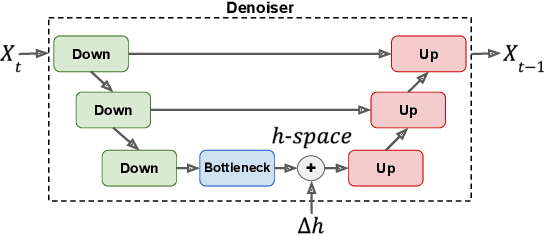

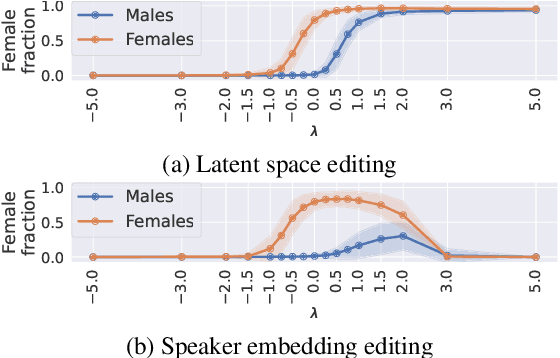

Abstract:The incorporation of Denoising Diffusion Models (DDMs) in the Text-to-Speech (TTS) domain is rising, providing great value in synthesizing high quality speech. Although they exhibit impressive audio quality, the extent of their semantic capabilities is unknown, and controlling their synthesized speech's vocal properties remains a challenge. Inspired by recent advances in image synthesis, we explore the latent space of frozen TTS models, which is composed of the latent bottleneck activations of the DDM's denoiser. We identify that this space contains rich semantic information, and outline several novel methods for finding semantic directions within it, both supervised and unsupervised. We then demonstrate how these enable off-the-shelf audio editing, without any further training, architectural changes or data requirements. We present evidence of the semantic and acoustic qualities of the edited audio, and provide supplemental samples: https://latent-analysis-grad-tts.github.io/speech-samples/.
Early Time Classification with Accumulated Accuracy Gap Control
Feb 01, 2024

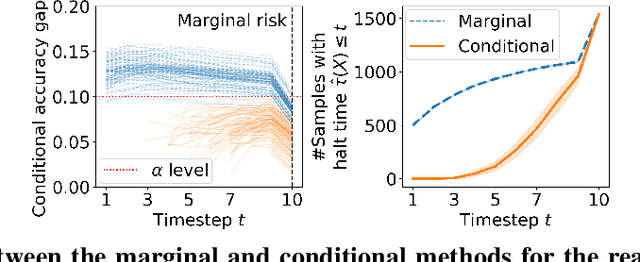

Abstract:Early time classification algorithms aim to label a stream of features without processing the full input stream, while maintaining accuracy comparable to that achieved by applying the classifier to the entire input. In this paper, we introduce a statistical framework that can be applied to any sequential classifier, formulating a calibrated stopping rule. This data-driven rule attains finite-sample, distribution-free control of the accuracy gap between full and early-time classification. We start by presenting a novel method that builds on the Learn-then-Test calibration framework to control this gap marginally, on average over i.i.d. instances. As this algorithm tends to yield an excessively high accuracy gap for early halt times, our main contribution is the proposal of a framework that controls a stronger notion of error, where the accuracy gap is controlled conditionally on the accumulated halt times. Numerical experiments demonstrate the effectiveness, applicability, and usefulness of our method. We show that our proposed early stopping mechanism reduces up to 94% of timesteps used for classification while achieving rigorous accuracy gap control.
Weakly-Supervised Surgical Phase Recognition
Oct 26, 2023


Abstract:A key element of computer-assisted surgery systems is phase recognition of surgical videos. Existing phase recognition algorithms require frame-wise annotation of a large number of videos, which is time and money consuming. In this work we join concepts of graph segmentation with self-supervised learning to derive a random-walk solution for per-frame phase prediction. Furthermore, we utilize within our method two forms of weak supervision: sparse timestamps or few-shot learning. The proposed algorithm enjoys low complexity and can operate in lowdata regimes. We validate our method by running experiments with the public Cholec80 dataset of laparoscopic cholecystectomy videos, demonstrating promising performance in multiple setups.
Self-Supervised Learning for Endoscopic Video Analysis
Aug 23, 2023Abstract:Self-supervised learning (SSL) has led to important breakthroughs in computer vision by allowing learning from large amounts of unlabeled data. As such, it might have a pivotal role to play in biomedicine where annotating data requires a highly specialized expertise. Yet, there are many healthcare domains for which SSL has not been extensively explored. One such domain is endoscopy, minimally invasive procedures which are commonly used to detect and treat infections, chronic inflammatory diseases or cancer. In this work, we study the use of a leading SSL framework, namely Masked Siamese Networks (MSNs), for endoscopic video analysis such as colonoscopy and laparoscopy. To fully exploit the power of SSL, we create sizable unlabeled endoscopic video datasets for training MSNs. These strong image representations serve as a foundation for secondary training with limited annotated datasets, resulting in state-of-the-art performance in endoscopic benchmarks like surgical phase recognition during laparoscopy and colonoscopic polyp characterization. Additionally, we achieve a 50% reduction in annotated data size without sacrificing performance. Thus, our work provides evidence that SSL can dramatically reduce the need of annotated data in endoscopy.
What's Behind the Mask: Estimating Uncertainty in Image-to-Image Problems
Nov 28, 2022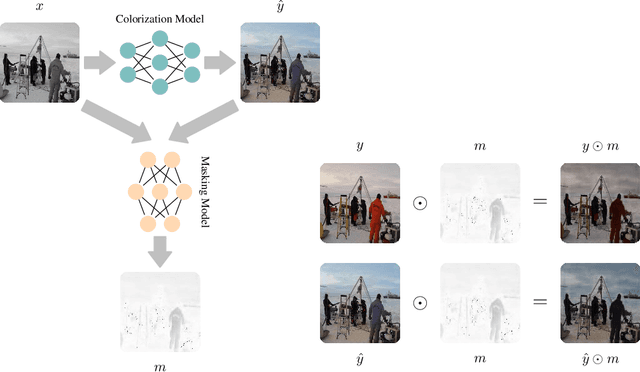
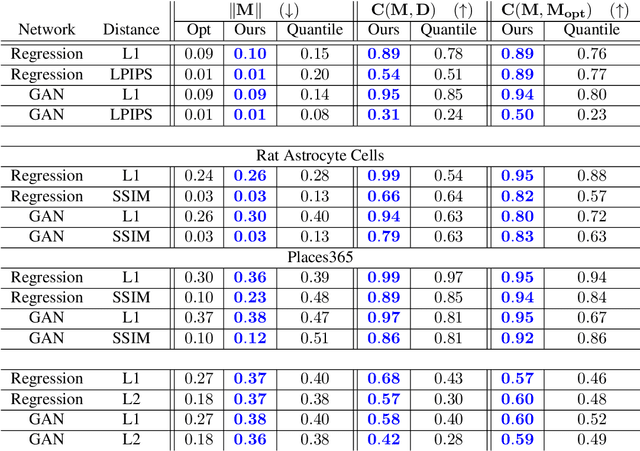
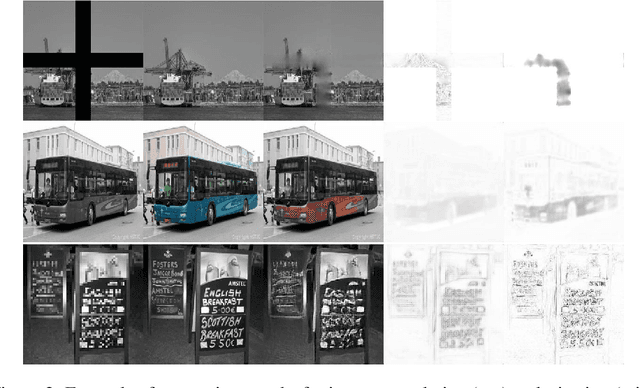
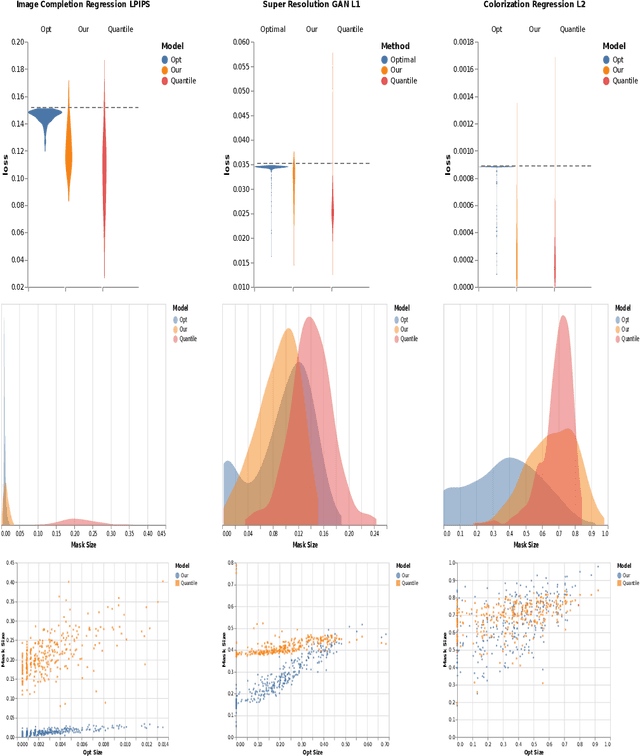
Abstract:Estimating uncertainty in image-to-image networks is an important task, particularly as such networks are being increasingly deployed in the biological and medical imaging realms. In this paper, we introduce a new approach to this problem based on masking. Given an existing image-to-image network, our approach computes a mask such that the distance between the masked reconstructed image and the masked true image is guaranteed to be less than a specified threshold, with high probability. The mask thus identifies the more certain regions of the reconstructed image. Our approach is agnostic to the underlying image-to-image network, and only requires triples of the input (degraded), reconstructed and true images for training. Furthermore, our method is agnostic to the distance metric used. As a result, one can use $L_p$-style distances or perceptual distances like LPIPS, which contrasts with interval-based approaches to uncertainty. Our theoretical guarantees derive from a conformal calibration procedure. We evaluate our mask-based approach to uncertainty on image colorization, image completion, and super-resolution tasks, demonstrating high quality performance on each.
 Add to Chrome
Add to Chrome Add to Firefox
Add to Firefox Add to Edge
Add to Edge